#secret stones
Explore tagged Tumblr posts
Text

Designer's Note: Secret Stones have been passed down from a time so long ago that not even the Zonai know their origins. Initially we designed them to resemble dragon embryos, but they eventually settled into the form of the magatama jewels worn as accessories in ancient Japan.
Although their shape is simple, we took great care to convey a sense of the power contained within the Secret Stones. So that their color profile wouldn't be too basic, for example, we mixed two or three hues within each Secret Stone to reflect the palette of each Sage.
The art director gave the concept of "rakkan" [the stamps that traditional Japanese artists use to sign their work] as the key aesthetic for the glyphs carved into the Stones. These glyphs are based on the Chinese characters that represent the Sages. While maintaining a minimum level of readability, we transformed the shapes of the characters into something closer to symbols, each of which includes an "eye" element. We hope these designs lend a distinctive air of mystery to the Sages.
#Legend of Zelda#Tears of the Kingdom#TotK Master Works#Secret Stones#Zonai#calligraphy#Zelda lore#my translation
717 notes
·
View notes
Text
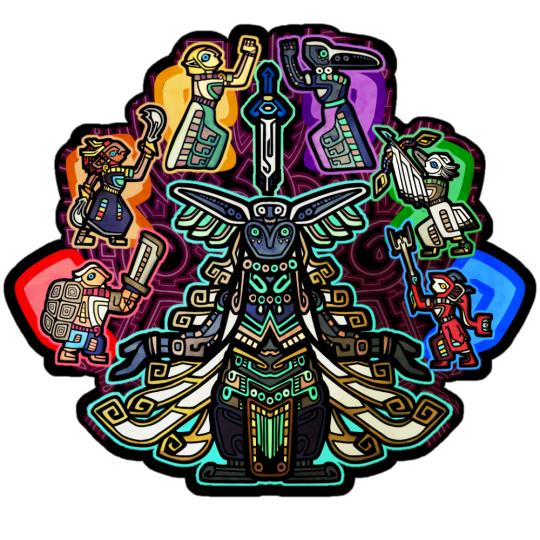
And now, the group design!
#aruart#fanart#legend of zelda#stained glass#totk#tears of the kingdom#rauru#mineru#zelda#yunobo#riju#tulin#sidon#seven sages#sages#secret stones#redbubble#stickers#shirt
2K notes
·
View notes
Text
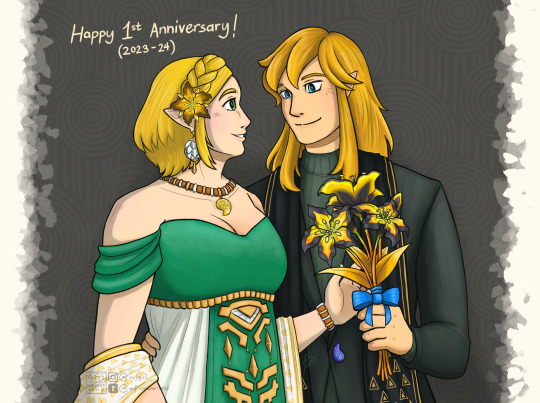
[Legend of Zelda] Tears of the Kingdom - Happy (belated) 1st Anniversary!
A day or so late but here we are! This is a sequel to my 2023 BotW Anniversary artwork.
Can't believe that it has a whole year since TotK's release. Fun fact about me, I took a day (and later on, a week) off from work just for TotK's release because of how hyperfixated I was with intense TotK hype at the time. I ended up going feral for a good month and by the time I completed the main story, I acculumated 300+ hours on my first playthough.
I have a lot of thoughts and critiques about Tears of the Kingdom but that's for a separate post. I have a lot of WIPs and ideas for TotK content to make so please keep an eye for them!
#legend of zelda#tears of the kingdom#totk#legend of zelda tears of the kingdom#zelink#totk link#link#hero of the wild#totk zelda#princess zelda#secret stones#sundelion#...also ngl the more I stare at this....the more it looks like a wedding anniversary lmao ;3#also totally not foreshadowing....something#<:3c
230 notes
·
View notes
Note
What does a Secret Stone taste like? Is it cold or hot? Does it just taste like a rock? Do you even remember?
It tastes like power, unbelievable relentless power. It tastes like tapping into the raw energy of infinity, and the vastness of unknown potential.
Also there is a hint of voltfruit.
61 notes
·
View notes
Text
I have finally assembled my Zonai Shrine™️
(May add more stuff later)


29 notes
·
View notes
Text
I think this one was actually the first one I did, but oh well. But yeah here's Sidon as a Dragon.
I think this is one of my favorites of the dragon designs I did and I want to draw it again at some point.
Anyway the Water Dragon would circle around the wetlands and Zora's Domain, dipping in and out of the ocean like Farosh in lake Hylia.
Wherever he goes rainfall appears around him, it's a common belief that when it starts to rain when there is seemingly no cloud in the sky that the Water Dragon must be nearby.
#prince sidon#king sidon#breath of the wild#tears of the kingdom#tears of the kingdom spoilers#totk#totk spoilers#totk fanart#eventide art#loz#the legend of zelda#dragonification#sidon#secret stones
25 notes
·
View notes
Text
so uh. I went to the nintendo store and uh
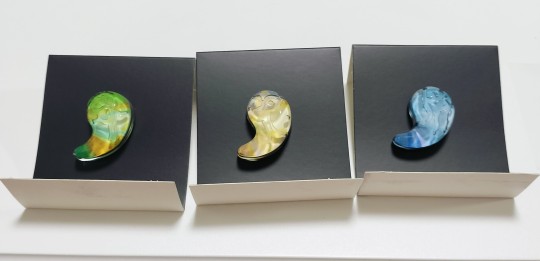
30 notes
·
View notes
Text
Tears of the Kingdom, Master Works, and the Zelda Timeline
Okay! So the Tears of the Kingdom Master Works has dropped and some translations have popped up online, including the Hyrule Chronology section of the book.
Why am I making this post? Simply put, I just want to get my thoughts on how the lore presented here and other materials such as interviews have changed my perspective on how Breath of the Wild and Tears of the Kingdom fit into the greater Zelda timeline.
Before TotK's release, I was in the camp that Breath of the Wild was in one of two places; At the end of the Child Timeline long after Four Swords Adventures in the same Hyrule. Or in a convergent timeline. I leaned more towards the Child Timeline placement however, as there being no mention of an inciting event that would merge all three timelines didn't sit right with me. Furthermore, I didn't think that the old world—the Hyrule that was established after the Interloper War—would survive such an event, and everything we had up till that point suggested that this was the same Hyrule as the past games.
With Tears of the Kingdom's release, I no longer believe that to be the case.
This stance has only been backed up as more and more lore details have been released. Everything points to the Hyrule we see in Breath of the Wild and Tears of the Kingdom to be a separate kingdom than the one present in the old games. So what makes me think this?
Well to start, let's cover Hyrule's history as seen in the old games and compare it to the history that Tears of the Kingdom presents.
The Repopulation of the Surface and the Birth of Hyrule:
After the events of Skyward Sword, humans returned to the surface after millennia and began settling alongside the Goron, Parella, Kikwi, and Mogmas. These different groups end up developing and creating their own civilizations with the Triforce in the hands of the Hylians. Now, despite the defeat of Demise and the Era of the Sky having mostly faded into myth and legend, word of a powerful artifact still floated around the surface. These rumors fed into the greed present in some people, wishing for power to do with what they wish. Of course, the artifact in question was the Triforce. A group of sorcerers known as the Dark Interlopers began to organize and raged war against the Hylians in order to obtain the Triforce.
This is what is known as the Interloper War, and which led to the birth of the Kingdom of Hyrule.
To protect the Triforce, the Three Golden Goddesses sent in the Spirits of Light—Faron, Eldin, Lanayru, and Ordona—to use the Mirror of Twilight to banish the Interlopers into the Twilight Realm. After the Banishment of the Twili, the Hylian ancient Sage of Light Rauru hides the Triforce within the Temple of Light within the Sacred Realm, which could only be accessed from the Sealed Grounds within the Light World (Hyrule). Rauru then constructs the Temple of Time over the ruins of the Sealed Grounds and uses the Master Sword, the Pedestal of Time, and the Door of Time as a gateway and the Three Spiritual Stones serving as keys to opening that gateway.
To protect the Sacred Realm, the Master Sword, and the Temple of Time, the descendants of Skyward Sword Zelda—the Goddess Hylia reborn—then establish the Kingdom of Hyrule and entrust the Three Spiritual Stones to the Zora, Gorons, and Kokiri as a showing of trust between the groups.
This is the birth of Hyrule as we see it in every Zelda game prior to BotW/TotK. With the Kingdom being established long after the events of Skyward Sword, and before the events of The Minish Cap. So how does this compare to what Tears of the Kingdom and it's book Master Works presents?
The Zonai, The Imprisoning War, and the birth of Hyrule:
To start, we actually have to go back to the Creation of the World. The Creation Myth of the World presented here is pretty much identical to the one seen in Ocarina of Time and other Zelda games with one key addition: The Golden Goddesses also created the Secret Stones and put them in the care of the Goddess Hylia.
While the Triforce isn't mentioned here, I have no doubt that it exists as well in the same state as it did in the past games: Triforce imagery is seen all throughout Hyrule in both Breath of the Wild and Tears of the Kingdom. So while it isn't directly mentioned, I don't doubt that it exists as well.
Long after the Secret Stones and the Triforce were created and the Golden Goddesses left the world to the Heavens, Hylia entrusted the Secret Stones to the Zonai people to protect and use them wisely. The Zonai then populate the surface and the depths, beginning their own civilization and mining operations for Zonaite to power their machinery. Eventually the Zonai abandon the surface and ascend to the sky, however their mining operations in the depths continue. During this period many different tribes spring up and form communities on the surface; The Rito, Gorons, Zora, Gerudo, and Hylians.
Facing the danger of a collapse, the Zonai abandon the depths and begin mingling with the surface people. They help out where they can using their knowledge and powers, however their population rapidly declines. Eventually, Rauru of the Zonai people and a Hylian Priestess Sonia meet and fall in love. The pair get married and begin the Pilgrimage of Light, purging the surface demons and placing Shrines of Light over the demon's point of destruction to prevent its reappearance.
The two, having gained a lot of respect and trust for their efforts to protect the surface-dwellers from dark forces, ascend as King and Queen of the Hylian people in a new Kingdom known as Hyrule.
However, not everyone on the surface is happy about the cleansing of the demons: Ganondorf, King of the Gerudo, sees the change as the weakening of the surface-dwellers. He believed that only the strong had the right to exist, and that by exterminating the demons and dark spirits that terrorized the people of the surface that it would weaken the world and those within it. Thus he began a plot against Hyrule and the Zonai, which we see in Tears of the Kingdom as The Imprisoning War: Sonia is killed by Ganondorf—who takes her Secret Stone and becomes Demon King Ganondorf. The Gerudo split into two groups, those who are against Ganondorf and those who are with him. The Rito, Zora, Goron, and anti-Ganon Gerudo meet up with Rauru and the Hylians to stop the world from falling back into the war-filled, chaotic land it was before the Pilgrimage of Light. One member of each tribe becomes a Sage entrusted with a Secret Stone to help fight against Ganondorf. Rauru sacrifices his life to seal Ganondorf in the Temple of Light deep in the depths underneath the surface, and Zelda transforms into the Light Dragon to repair the decayed Master Sword that was sent back in time.
How does this connect?
So we have two very different origin stories for Hyrule that have some strong parallels: A Sage of Light named Rauru is alive to see the birth of the Kingdom and a war against dark forces; the war centers around mystical, powerful artifacts created by the Golden Goddesses; The Temple of Light plays a major role in the war; and stone-like artifacts are entrusted to different tribes across the land as a sign of trust and community.
What do I make of this? If one thing is clear, it is that these two origin stories parallel each other. One of the meta themes of the Zelda series at large is the idea of the cyclical nature of the world: The Curse of Demise, the rebirth of the Spirit of the Hero, the way Hyrule is locked in a cycle of prosperity and decline, etc.
It is my belief that the Hyrule we see in Tears of the Kingdom and Breath of the Wild are yet another example of this. It is a kingdom that mirrors the Hyrule from past games with a similar, yet notably different, history.
Under no circumstances can one claim that these are the same event. Even if you ignore all the differences between the origins themselves, the aftermath still shows that these two stories surround two different Hyrules: In TotK's Hyrule, after the Imprisoning War the Gerudo outright banned any male Gerudo from being king and established the Chieftain position to take over rule. This cannot happen if these two Hyrules are the same as in both Ocarina of Time and Four Swords Adventures, Ganondorf is the King of the Gerudo before becoming Ganon. Hyrule Castle was also built over the Temple of Light to hide away Ganondorf's sealed body and Rauru which survives over 10,000 years till the events of Breath of the Wild and Tears of the Kingdom. Whereas in the other Hyrule, there are several different Castles that are destroyed and built elsewhere. These cannot be the same origin story and these kingdoms cannot be the same Hyrule. But when what about the clear references to games such as Ocarina of Time, Twilight Princess, Wind Waker, A Link to the Past, and others? How can they be referenced as real events while also being in a different Hyrule?
Well that is when we turn to an interview with series director Eiji Aonuma and the director of Breath of the Wild/Tears of the Kingdom Hidemaro Fujibayashi. When asked about how this version of the Hyrule origin story connects to the version seen in the past games, Fujibayashi states that the lore and story of the series is meant to fit together and not to collapse on itself. He says that perhaps there was a Hyrule before the kingdom we see in Breath of the Wild and Tears of the Kingdom, that maybe it was destroyed and forgotten to time.


So is that it? Case closed? Maybe! But I'm hesitant to say so, what could've caused such an event? Why was it forgotten to time yet events that came before it wasn't? Well, it is this and Master Works that push me to two different ideas for how BotW/TotK fit into the overall Zelda timeline: A timeline convergence, and a new timeline split. Each with their own pros and cons and evidence.
The Timeline Convergence Theory
I think the Timeline convergence theory is the easiest one to articulate so lets start there.
It really is just as it sounds; Sometime long after Adventure of Link, Four Swords Adventures, and Spirit Tracks the three timelines converge into one, collapsing the civilizations of the Old Worlds and bringing things to a similar state seen back during the Era of the Sky. From there, everything we get in Breath of the Wild and Tears of the Kingdom occurs. Legends and myths of the world long past still persists, but no one is able to prove that these events actually occurred. I have made a graphic to show what the timeline would look like in this scenario.

(You may have noticed that I put Echoes of Wisdom—a game that has not released—on the timeline after Four Swords Adventures. I'll make a comment thread on this post explaining why I think that the game might take place there. That too is just a theory.)
What does this theory have going for it? Well it seemingly explains any contradictory evidence: A Link to the Past, Twilight Princess, and Wind Waker are all heavily referenced despite all three of those games taking place in separate timelines? Not a problem if all of those merged back into one! An event such as that wouldn't be smooth sailing for the people alive during it either, Hyrule is in such a different state in all three branches of the timeline that if they were to converge again it would be akin to a universal reset. It also follows the series trend of death and rebirth and story parallels: The convergence—which I have called "The Great Consolidation"—would be a parallel to the three Golden Goddesses creating the world. The event would have killed off the Old Worlds, yes, but it allows for something new to spring up in its place—which the series again is no stranger to with the Adult Timeline.
Things like the Rito and Zora coexisting, the Tunics of past heroes found in the depths, locations referencing characters across the series; It can all be explained if it all simply happened.
But my biggest issue with that theory was this; Why would the timelines converge? What event could cause this and why is there not even a hint of such a thing occurring? It just doesn't make sense to me that three timelines with hundreds of years worth of history would all be remembered and passed down through legend, yet the incident that brought them together with such force and chaos would be completely forgotten.
That just doesn't sit right with me, and I have no answers to any of those questions even though it is what I had settled on for the past year or so.
Which leads me to the next theory.
The Era of the Goddess Hylia Timeline Split Theory
This theory proposes that the events of Skyward Sword—much like that of Ocarina of Time—create a timeline split. This one however as a result of Link's use of the Triforce at the end of the game.
Just like with the timeline convergence theory, I made a little graphic of what the Zelda timeline would look like if this theory would end up being true.

Like I said earlier, this theory centers around the idea that a timeline split occurs during the events of Skyward Sword when Link uses the Triforce to kill Demise in the present day. Now to be honest, before recently I did not subscribe to the idea. I just didn't think there was much merit to it. But recently I had thought about it a bit more, and I'm much more open to the idea now.
It isn't killing Demise in the present with the Triforce that is the cause of the split, but rather the aftermath. To recap the end of Skyward Sword for anyone who hasn't played it or may have forgotten; After using the Triforce to eradicate Demise, Zelda awakens from her slumber and reunites with Link, Groose, and Impa. Ghirahim however is pissed that his Master is dead and thus swiftly incapacitates the four before taking Zelda through the Gate of Time and thousands of years into the past during the Era of the Goddess Hylia, shortly after Demise was imprisoned in the Sealed Grounds.
It is here that Ghirahim uses Zelda's soul to bring back Demise, freeing him from his prison and revitalizing him. Groose and Link follow Ghirahim and Link fights Demise. Using the Master Sword, Link kills Demise in the past—freeing Zelda's soul—before returning with Zelda and Groose to the present day.
The theory is pretty self-explanatory now isn't it? It is a similar premise to the Child/Adult Era split in Ocarina of Time; Something happens in the future, and characters do something in the past that would stop that future from occurring—splitting the timeline as a result. In this case, rather than closing the Door of Time and then warning the Royal Family of Ganondorf's plans, it is the killing of the Demon King Demise in the past that splits the timeline. He can't die in the present if he's already dead after all.
This would then lead to a completely different history, one that mirrors the one that we have come to know in love over the past 38 years of this series. Hyrule is established—this time by the Zonai—Ganondorf threatens the Kingdom, and the Princess and Hero group up to stop him time and time again. It allows for both the TotK Hyrule origin story to occur as well as the original Hyrule origin story without having the big massive question of how the timelines could converge and not be remembered.
But what about the Twilight Princess references? Or the Wind Waker references? Or the Tunics we can find? What about the "Whether Skyward Bound, Adrift in Time, or Steeped in the Glowing Embers of Twilight" line from Breath of the Wild? This theory doesn't explain why the past games are referenced time and time again, it only explains the two different Hyrules...right? Well that's where we return to the idea that this series likes to tell stories that parallel each other. With TotK's Master Works again confirming that there were many appearances of Calamity Ganon before the creation of the Divine Beasts, I believe that the past games did also happen in this timeline—or at least, a version of them.
Let's go back to the beginning when I was comparing how similar the two versions of Hyrule's origin story are and how they're distinctly different enough to clearly be two different events despite their broad similarities. Well, the story of The Imprisoning War doesn't just reflect the Interloper War; It also reflects the story of Ocarina of Time.
After a failed attack on Hyrule, King of the Gerudo—Ganondorf—swears fealty to the Royal Family of Hyrule. This is a ruse, however. One that conceals his true plan to betray the Royal Family and steal a mystic artifact that the Royal Family safeguards to gain godlike power and to take the land for himself, shaping it with his own views. Zelda sees through this ruse, and tries warning the King of Hyrule to Ganondorf's plan. The King of Hyrule doesn't take action however, leading to Ganondorf taking the artifact and gaining immense power. Ganondorf with his newfound power wreaks havoc across the land, forcing other groups living in Hyrule—including the Gerudo—to band together and form the Seven Sages and defeat Ganondorf. There is also the Master Sword traveling through time.
Which story did I just explain? The answer is both Tears of the Kingdom's Imprisoning War and Ocarina of Time. Of course, there are some differences; The Sages in OoT are Light, Forest, Fire, Water, Shadow, Spirit, and Zelda (implied to be time). In TotK the Sages are Light, Time, Wind, Fire, Water, Lightning, and Spirit. Notably there is no Hero present during the Imprisoning War, which is likely a reason why the Sages were getting their asses handed to them until Rauru sacrificed himself. Not much time travel happens beyond Zelda getting sent to this era from the future before the War broke out and the decayed Master Sword being sent to Zelda from the future shortly after the War. And King Rauru is also aware that Ganondorf is not to be trusted, while the King of Hyrule in OoT outright rejects the idea.
But the broad strokes still remain, and it cannot be denied that Ocarina of Time was a major influence on the story of the Imprisoning War.
So if these major events can be paralleled, then why not others? Again, we know that there were many appearances of Calamity Ganon; Perhaps one of those appearances broke the barrier between the Light world and the Twilight Realm? Maybe another caused the Hero to have to traverse the seas beyond Hyrule to try to stop it? Maybe another caused the Royal Family and the Hero to journey to the Sacred Realm? Under this theory there is still a Hero of Twilight, a Hero of Winds, a Hero of Legend, etc. But they aren't the ones we're familiar with. All the references to past characters and events are still canon, though the stories surrounding them might be a little different.
It could explain why the Rito and Zora can coexist; In this timeline, they simply evolved separately rather than the Rito evolving from the Zora. Perhaps they shared a common ancestor in the Parella in this timeline rather than just the Zora evolving from them.
Now there are a few issues with this theory as well.
For starters, I admit the idea of the references to the past games not actually being the past games but rather some similar version of the past games kind of feels like a cop-out and likely wasn't the original idea when making Breath of the Wild (whether that changed later on is to be debated).
Furthermore, the Gate of Time was opened when Link killed Demise in the past, and we know that the Door of Time was constructed over the Sealed Grounds where the Gate of Time used to be. So it could be argued that it follows similar rules to the Door of Time in which if the Door/Gate is opened, then one can freely do what they need in the past and the future that has already been created would then reflect that. But I don't think that alone disproves this theory. If that is the case, then Demise being killed in the past should then completely change everything that happens after. Skyward Sword as it is occurs because Demise isn't dead and is Imprisoned in the Sealed Grounds.
Killing Demise in the past means that Link then wouldn't need to go on the journey to find Zelda in the present because she never would've been captured to begin with.
It's a paradox.
And while the series isn't new to tackling paradoxes (The Song of Storms and the events of BotW/TotK are both examples of Bootstrap paradoxes; With Adult Link learning the Song of Storms from Guru-Guru and then going back in time to teach Guru-Guru the same song; and Zelda in TotK going back in time to help imprison Ganondorf which led to the creation of Calamity Ganon and the events of BotW which then led to Zelda finding Ganondorf and getting sent back in time), I don't think that this aligns with those paradoxes. The two deaths of Demise is much more similar to Link preventing Ganondorf's rise to power at the end of OoT, thus preventing much of OoT from happening. And yes, that happened after Link closed the Door of Time so it can be argued that it wouldn't have caused a timeline split if he did it beforehand. I just think that it makes a bit more sense that a reality following Demise's death in the past would be created separate from the reality we follow throughout most of Skyward Sword.
However there is another issue with this idea: At the end of Skyward Sword, Link puts the Master Sword in her pedestal in the past before returning to the present, where the Master Sword still stands in the very same pedestal—suggesting that it is the same continuity as the one in which Demise was killed in the past.
This one I admittedly have no answer for.
All I can say is that we again see a similar thing in Ocarina of Time. Link takes the Master Sword back to the past and puts her in the Pedestal of Time and then the timeline splits, yet the Master Sword still exists in the Adult era. Maybe the sword's status as The Sword of Time means that she isn't bound by time and is a constant in every timeline? I'm not sure.
The TotK Master Works book is also ambiguous as to how long after the Creation of the Secret Stones by the Golden Goddesses it took for the Zonai to then populate the surface and the depths. It could be a few hundred years, or a few hundred-thousand years. There just isn't enough to say.
Conclusion:
As of right now, these two theories are what I operate around when it comes to the placement of Breath of the Wild and Tears of the Kingdom in the Zelda timeline. I've been a massive fan of this series for most of my life, and it really sparked my love for storytelling and lore. So while the contradictions and confusion that Tears of the Kingdom's lore and story has caused in the Zelda community has admittedly been terrifying, I do think that it still has its place and that the Zelda universe is still in one cohesive piece.
I'll definitely be making adjustments to this when Echoes of Wisdom releases and I can really dive deep into that game! There are already parts in the trailers that has me questioning if this game has any lore connections to Tears of the Kingdom and Breath of the Wild and I'm excited to learn more about the Zelda universe when that game releases. Maybe it'll completely change my stance once again.
#long post#The Legend of Zelda#Legend of Zelda#LoZ#Zelda#Zelda lore#Zelda timeline#Tears of the Kingdom#Breath of the Wild#Ocarina of Time#Interloper War#Imprisoning War#King Rauru#Sage of LIght#Sage of Light Rauru#Sonia#Queen Sonia#secret stones#triforce#golden goddesses#hylia#Skyward Sword#Demon King Demise#Ganondorf
21 notes
·
View notes
Text
The secret stones but on the back there’s a warning label that reads “DO NOT SWALLOW Side effects may include: Dizziness, a bright glow emitting from your body and draconification”
#zelda#the legend of zelda#loz#totk#tears of the kingdom#loz tears of the kingdom#totk spoilers#just in case#totk dragons#secret stones#text post#bunny’s talk tag
36 notes
·
View notes
Text
Secret Stones: Shadow and Forest

Paya: Sage of Shadow (Ability: Releases a large smokescreen to sneak up or escape from enemies)
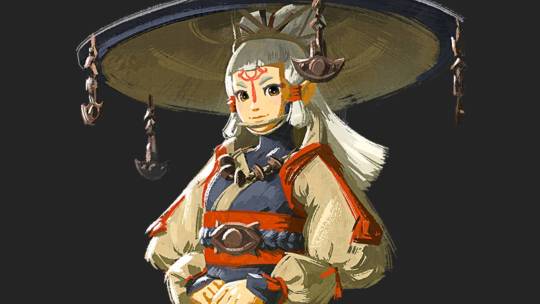
Hestu: Sage of the Forest (Ability: Recovers one stamina wheel)

(Inscriptions are based on kanji of "shadow" and "forest" like the others)
28 notes
·
View notes
Text
Just defeated ganon so here are some pics I took!!
(Spoilers)
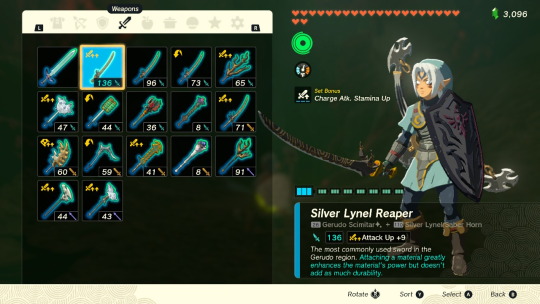

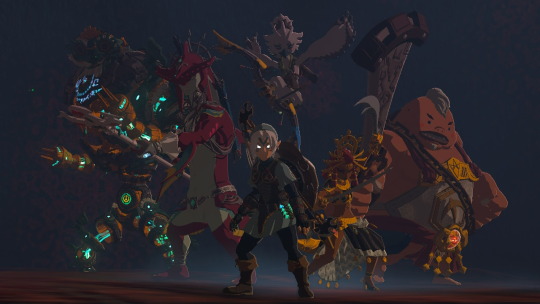

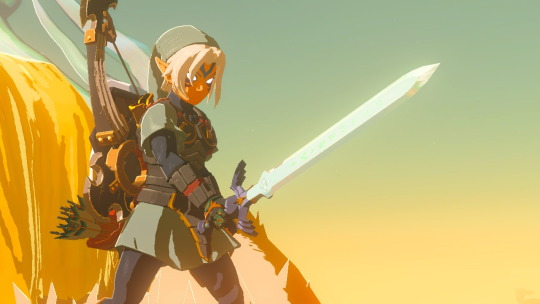
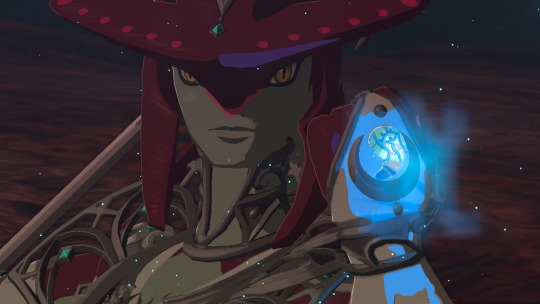
Gerudo Scimitar +9 attack + Silver Lynel Horn = 138 total damage
#totk#Sidon#ganondorf#totk ganon#totk link#link#light dragon#demon dragon#Nintendo#spoilers#totk spoilers#fierce deity#fierce deity link#wepons#totk wepons#Zelda#totk Zelda#master sword#secret stones#pictures#pics I took#tumblr quality
13 notes
·
View notes
Text
LoZ: TotK - The Secret Stones
Haven't gotten to the end of the game yet, but I feel like it'd be odd if all the Secret Stones did was give the Sages spirit avatars.
Also, Sonia, Rauru, Mineru, & Zelda's Secret Stones directly increased their natural abilities instead of giving them avatars.
So, I'm guessing that they can either give spirit avatars or they can actively enhance the Sages' abilities.
Like, it's one or the other.
Otherwise, it isn't really enhancing their abilities at all.
LoZ Wild Masterlist
2 notes
·
View notes
Text

Feeling hungry, might eat one of these cool gummies
5 notes
·
View notes
Text
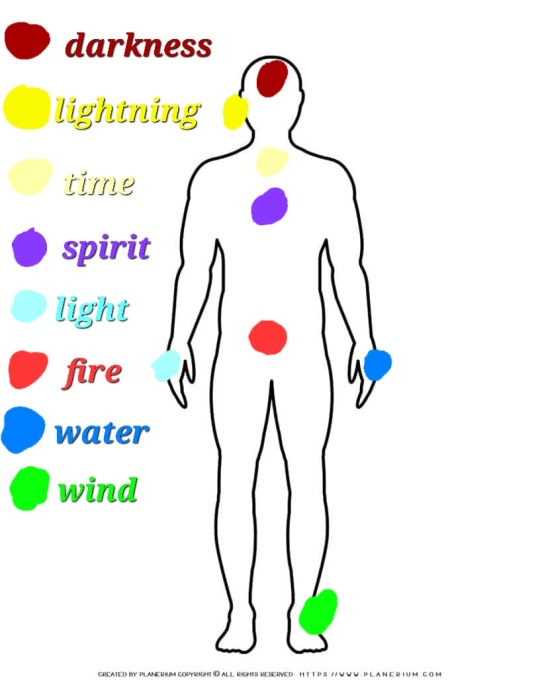
Here's an image I made of where the sages/Secret stone wielders wear their stones. Interestingly, we don't see if Zelda's secret stone turns into a necklace like the other secret stones turn themselves into something that can be easily worn for their bearer, or if she had to connect it to a necklace herself
#totk#tears of the kingdom#totk spoilers#secret stones#loz totk#im pretty sure i have everything correct
6 notes
·
View notes
Text
do you think that if you shredded up a secret stone like cheese it would have the same effect
2 notes
·
View notes
Text
zonai secret stones (tears of the kingdom)
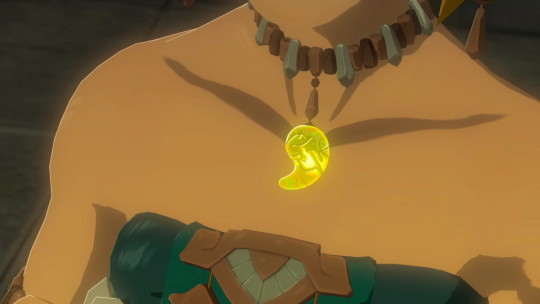
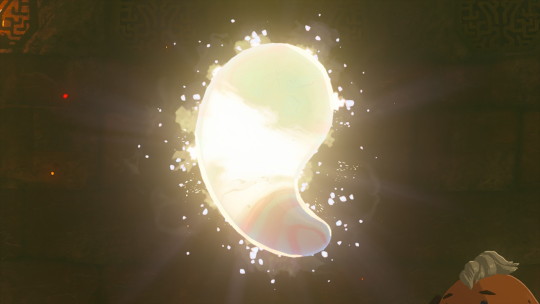



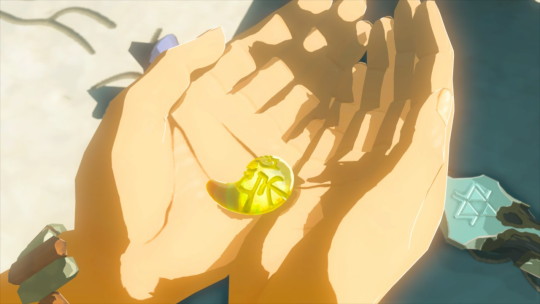
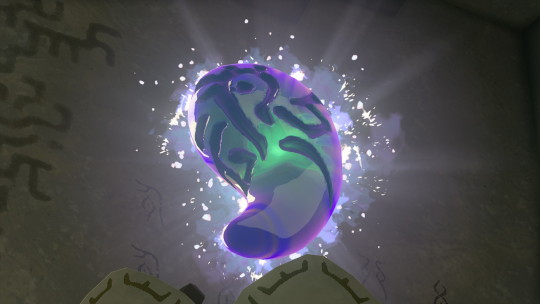
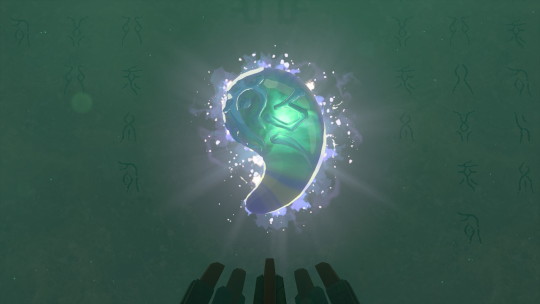
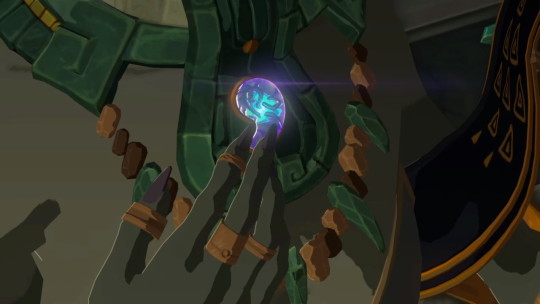

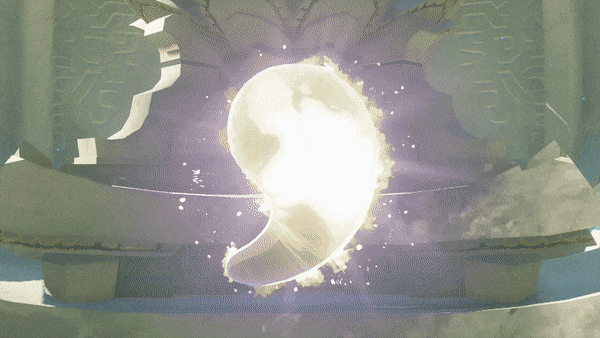

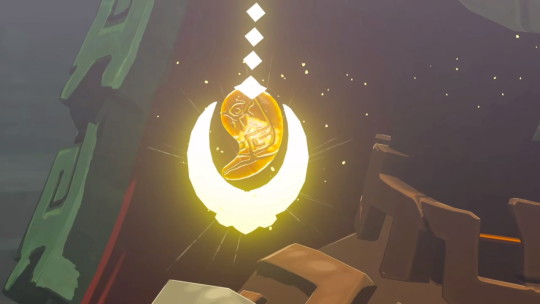
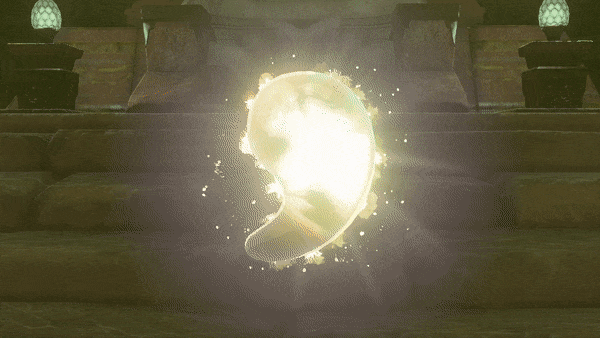

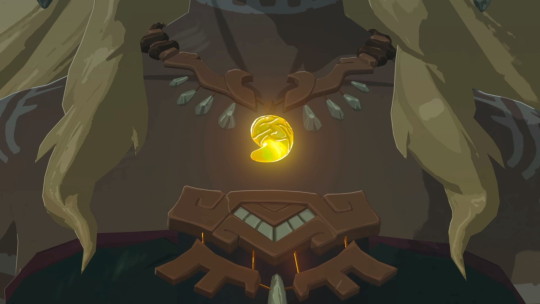

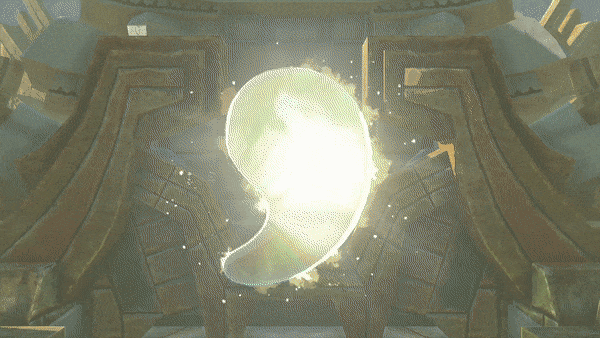
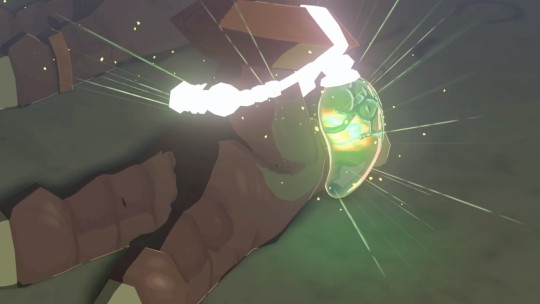
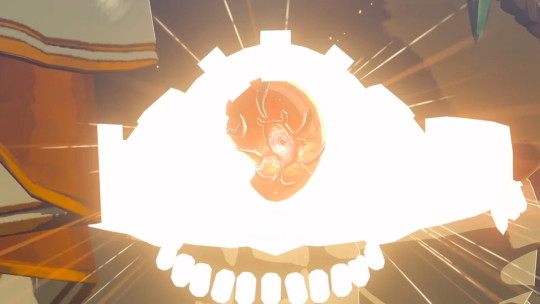

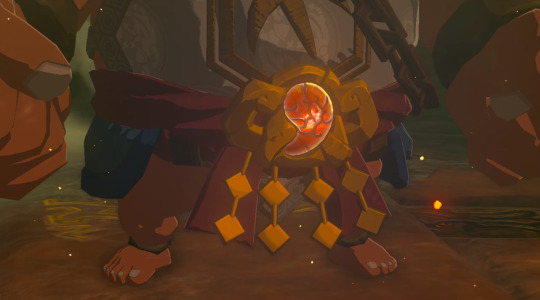


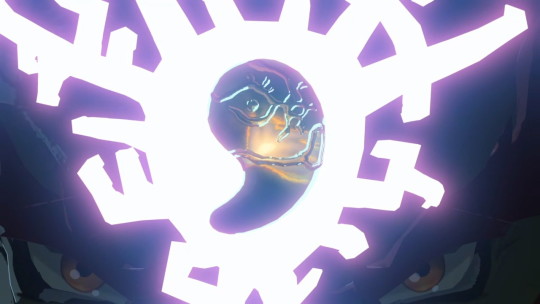
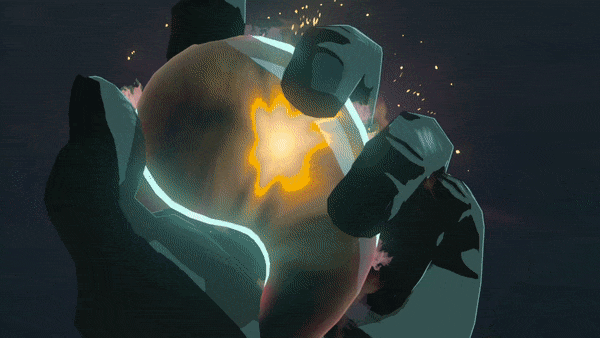
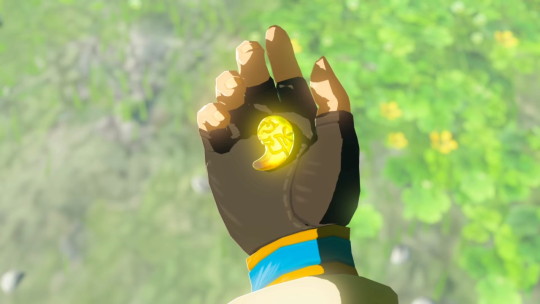
#loz#tloz#ref#reference#zelda#zelda reference#lozgraphics#legend of zelda#totk#loz totk#tears of the kingdom#secret stones#zonai#zonai secret stones#loz misc tag#gif warning#totk spoilers#(just in case)
49 notes
·
View notes